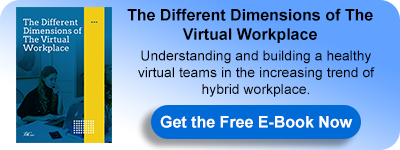Leadership Essentials: Office Vs. Remote
"Leadership" would always imply providing guidance and support to achieve a common goal. However, the setting through which leaders provide leadership suggests a difference in style. This is common sense because when you lead people as they see you daily, it must be different from leading this same bunch behind a screen.
Let's look at five key differences:
Difference 1: Delivering Instructions and Information
In an onsite setting, leaders usually visualize instructions. They make sure their actions match their words. There is high dependency in an onsite setting on visual face-to-face interactions. However, leaders need to use Technology in a virtual environment and provide clear instructions. Expectations need to be as transparent as possible. Leaders need to follow up more thoroughly through a systematic process to ensure each is on the same page with their teams.
Difference 2: Mastering Communication Channels
In an onsite setting, leaders are highly dependent on one-on-one Communication or entire departmental conversations. There are also informal chats around the water cooler or down the hallway. Emails are used as reminders or as a documentation tool. In a remote setting, leaders are required to master all channels of communication, whether it's social media, chats, emails, or phone calls since those are the main channels of communication.
Difference 3: Creating Points of Connection
In an onsite setting, leaders can create several points of connection. Whether through team meetings, offsite lunch outs, brainstorming sessions, or even after our time out. However, when it comes to remote settings, creating points of connection is much harder. This needs to be fully and consciously established by leaders. Neglegtic points of contact will lead to a drop in trust. Leaders can keep relations strong and avoid the "out of sight, out of mind" dilemma through those connections.
Difference 4: Using Technology
Leaders may rely on Technology to perform some tasks in an onsite setting. However, they can easily jump into a face-to-face meeting with their teams when things become essential. Yet, Technology is the main tool for meetings, communicating, and getting a job done when it comes to a remote environment. Hence, leaders cannot afford not to be fully technologically engaged.
Difference 5: Managing Expectations
At the office, it's easy for managers to monitor employees and manage their progress and performance. Employees are right there. Wandering around cubicles can easily give the leader an idea of whether they are meeting expectations or not. However, in a remote setting, this is not possible. Therefore, creating checkpoints and depending on management by objectives is essential.
1Manila Recruitment, 25 Feb 2021, Ron Cullimore, Onsite Vs Remote work: 7 Key Differences in leadership Style, Accessed 29 Jan 2022, https://manilarecruitment.com/manila-recruitment-articles-advice/onsite-remote-work-key-differences-leadership-style-infographic/
For more about this topic, download our latest book " The Different Dimensions of The Virtual Workplace " for FREE:
